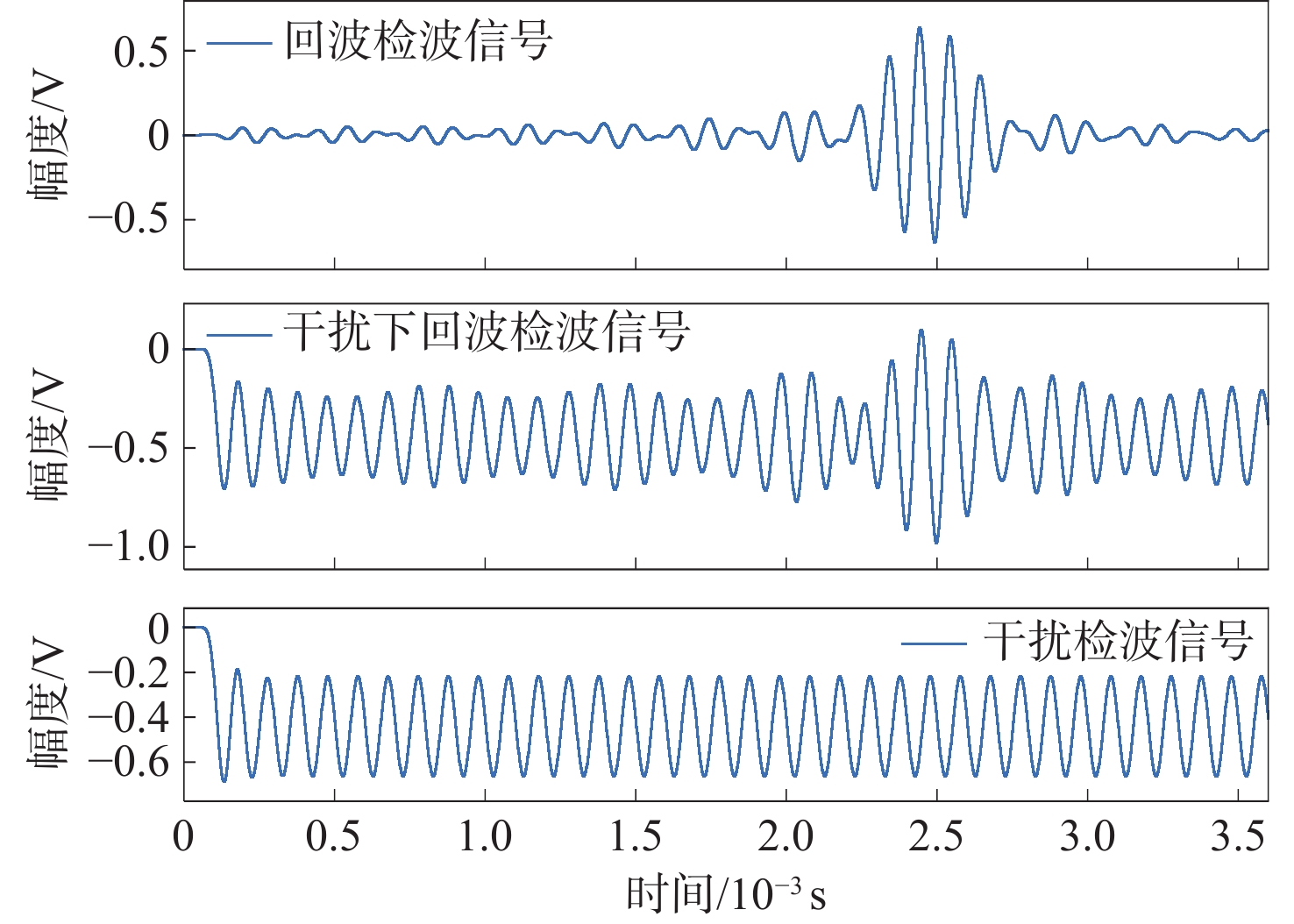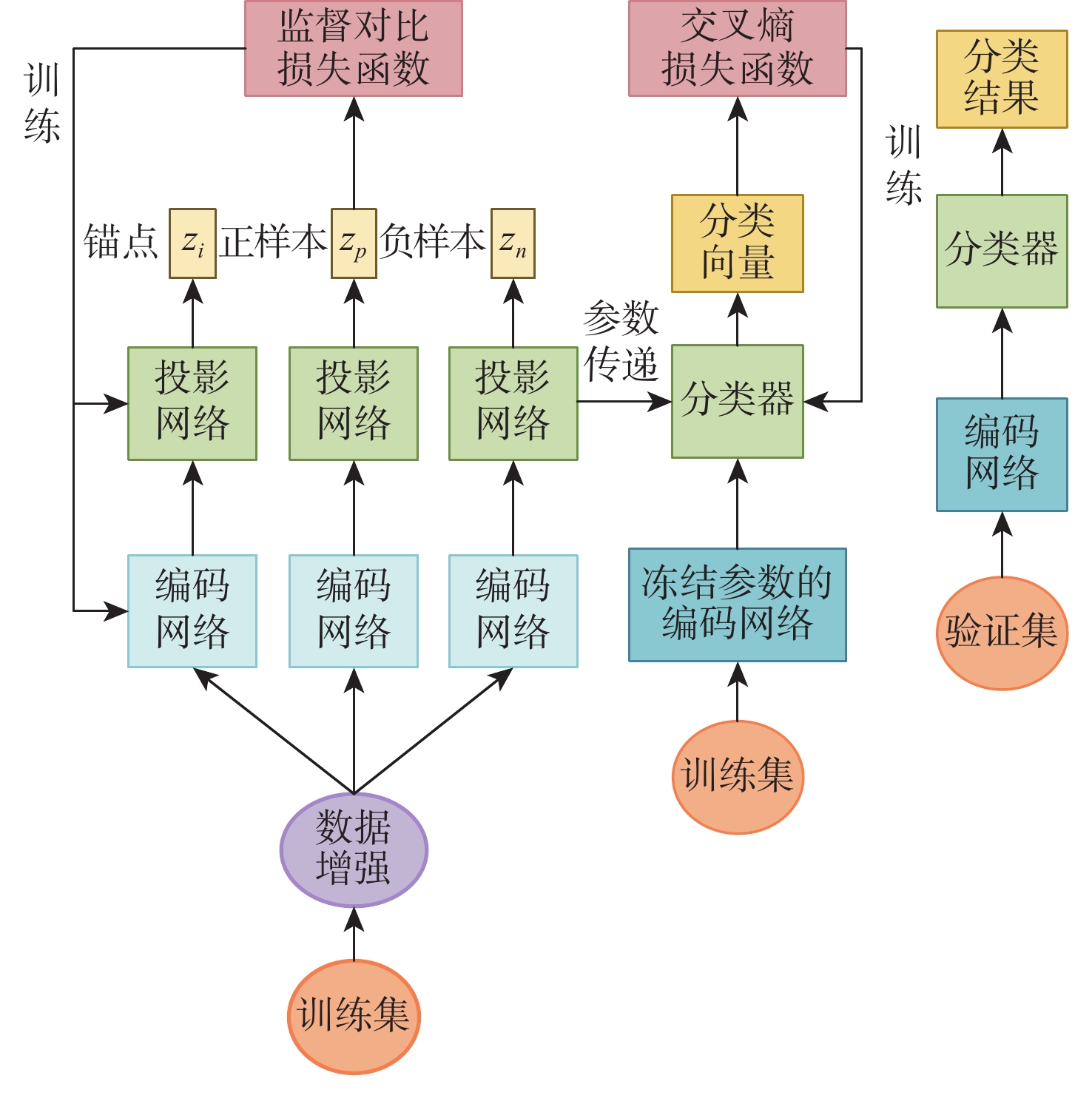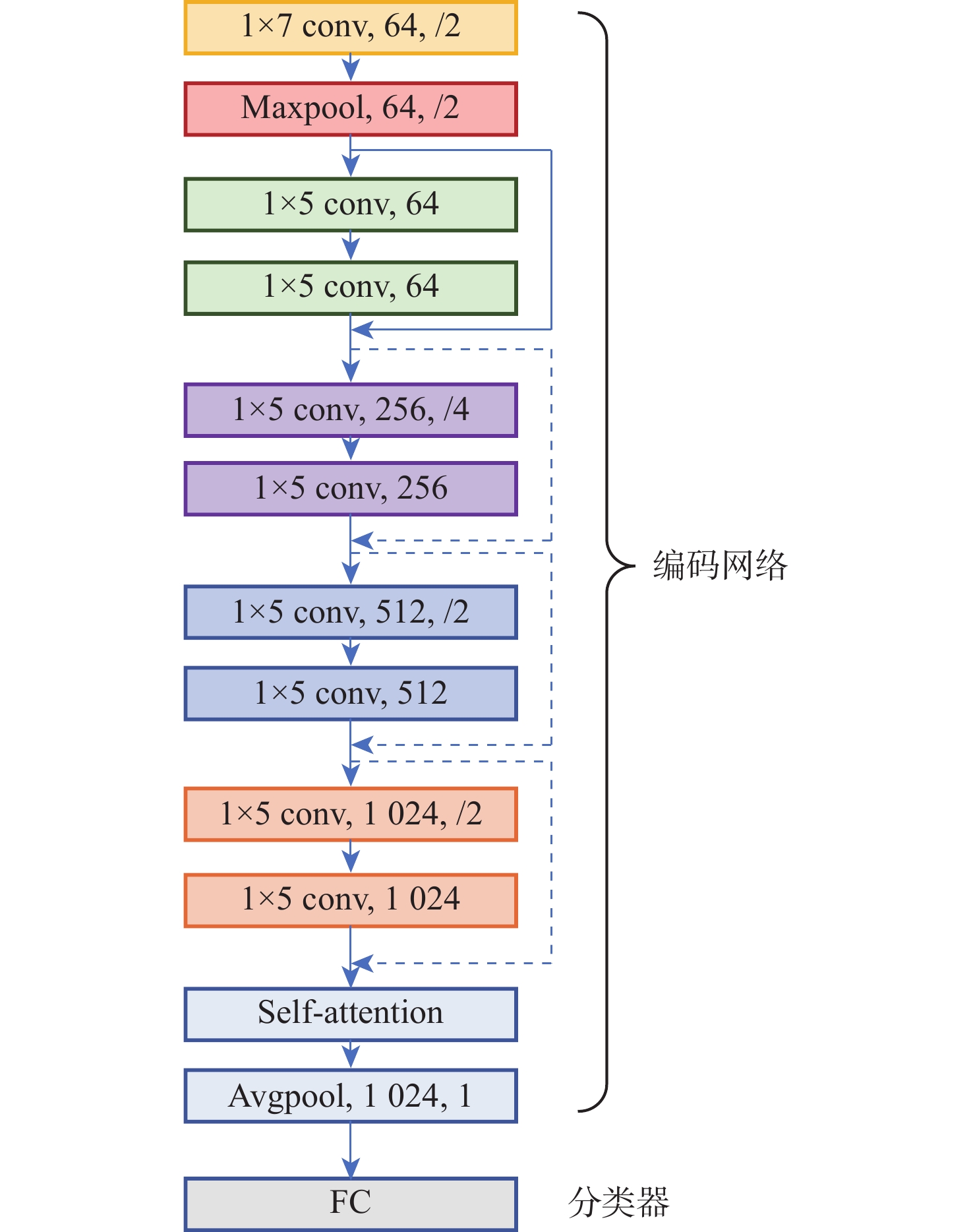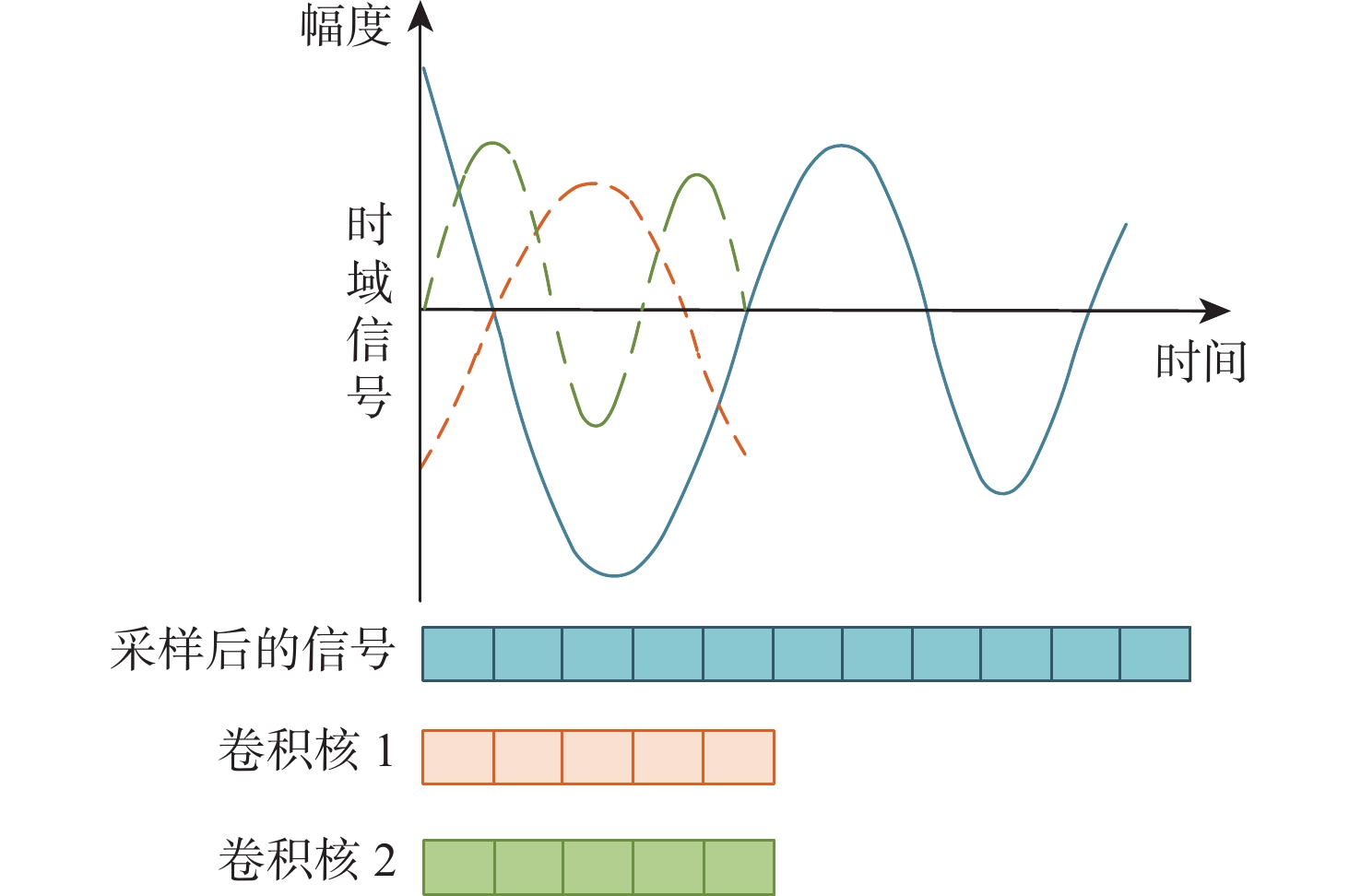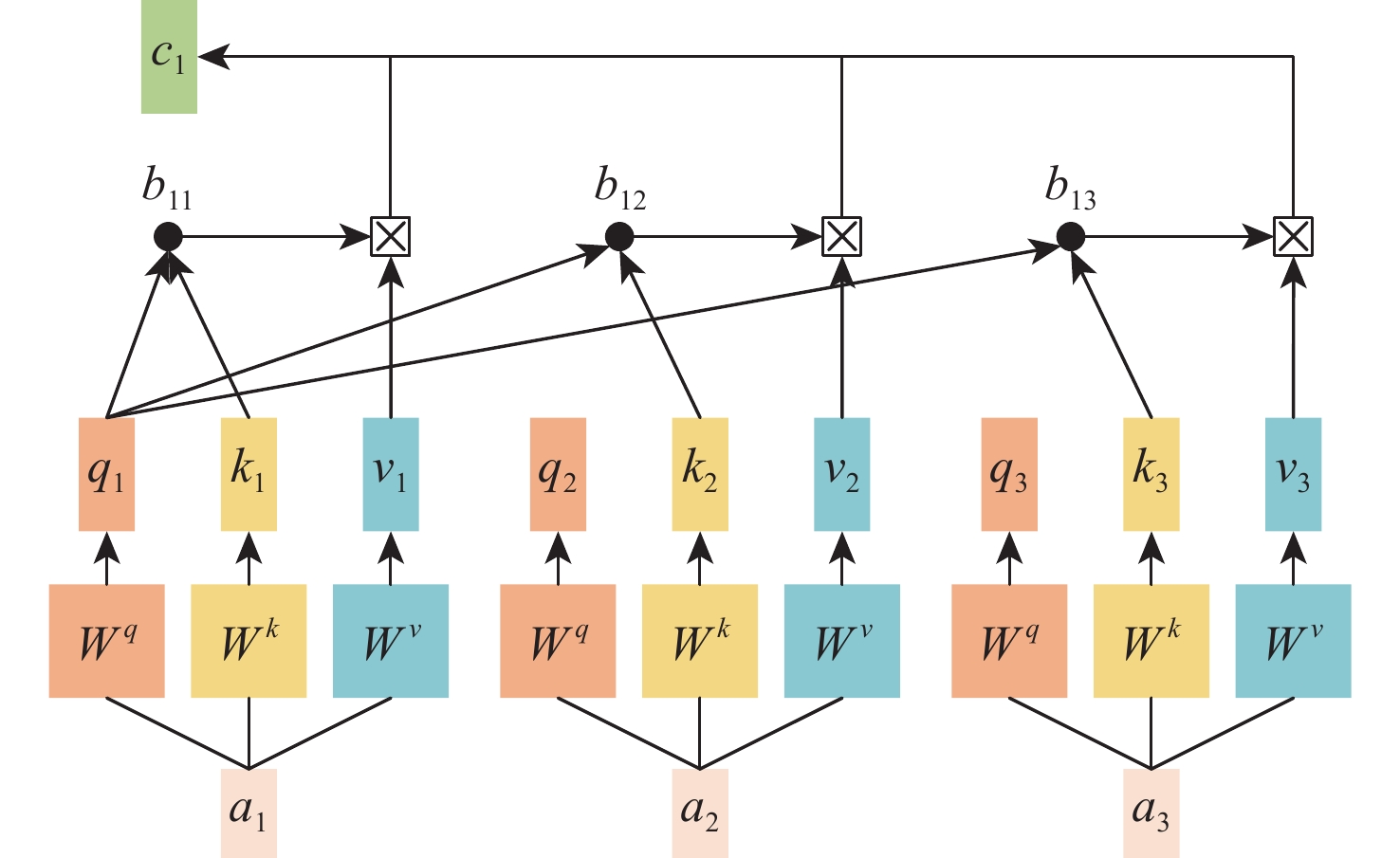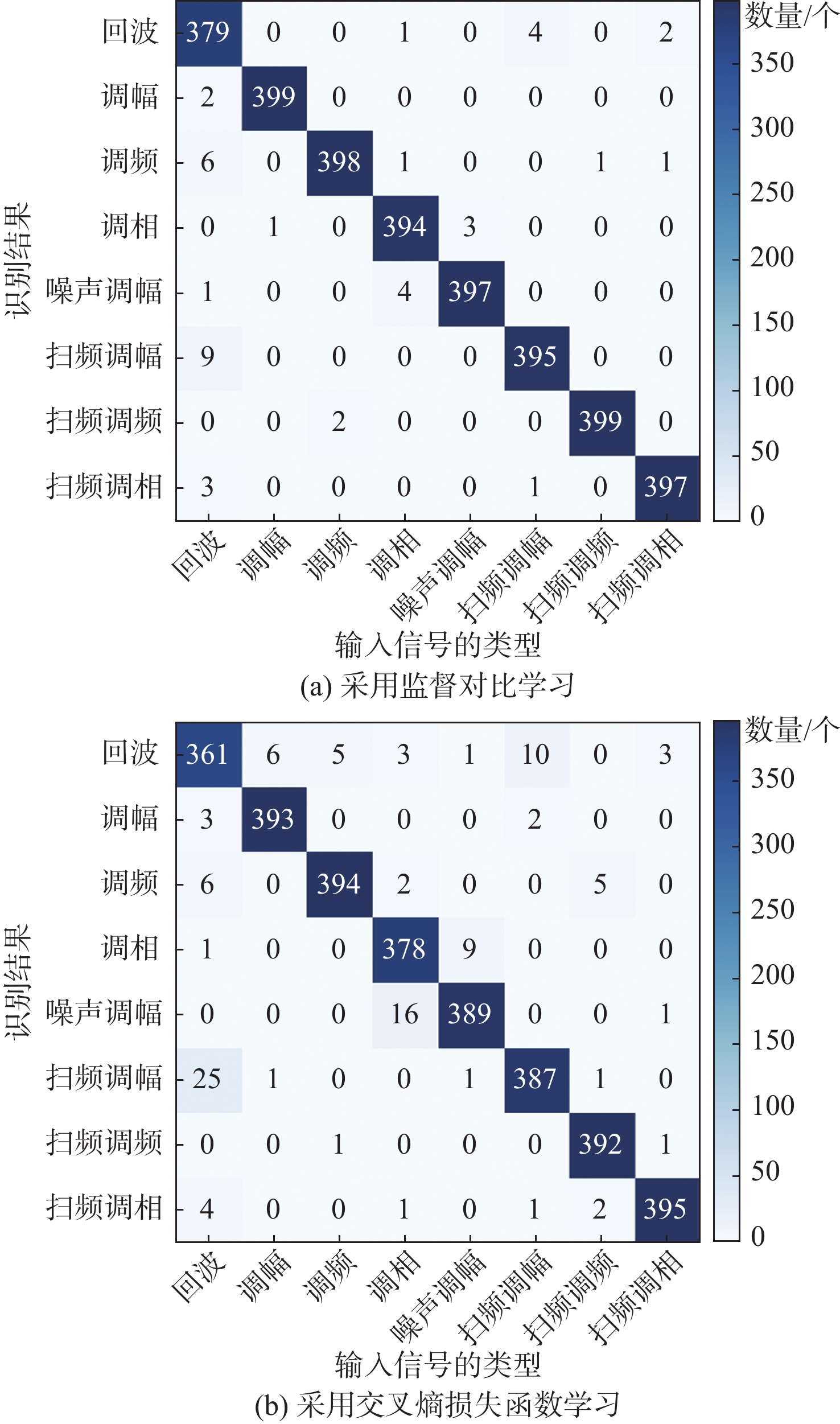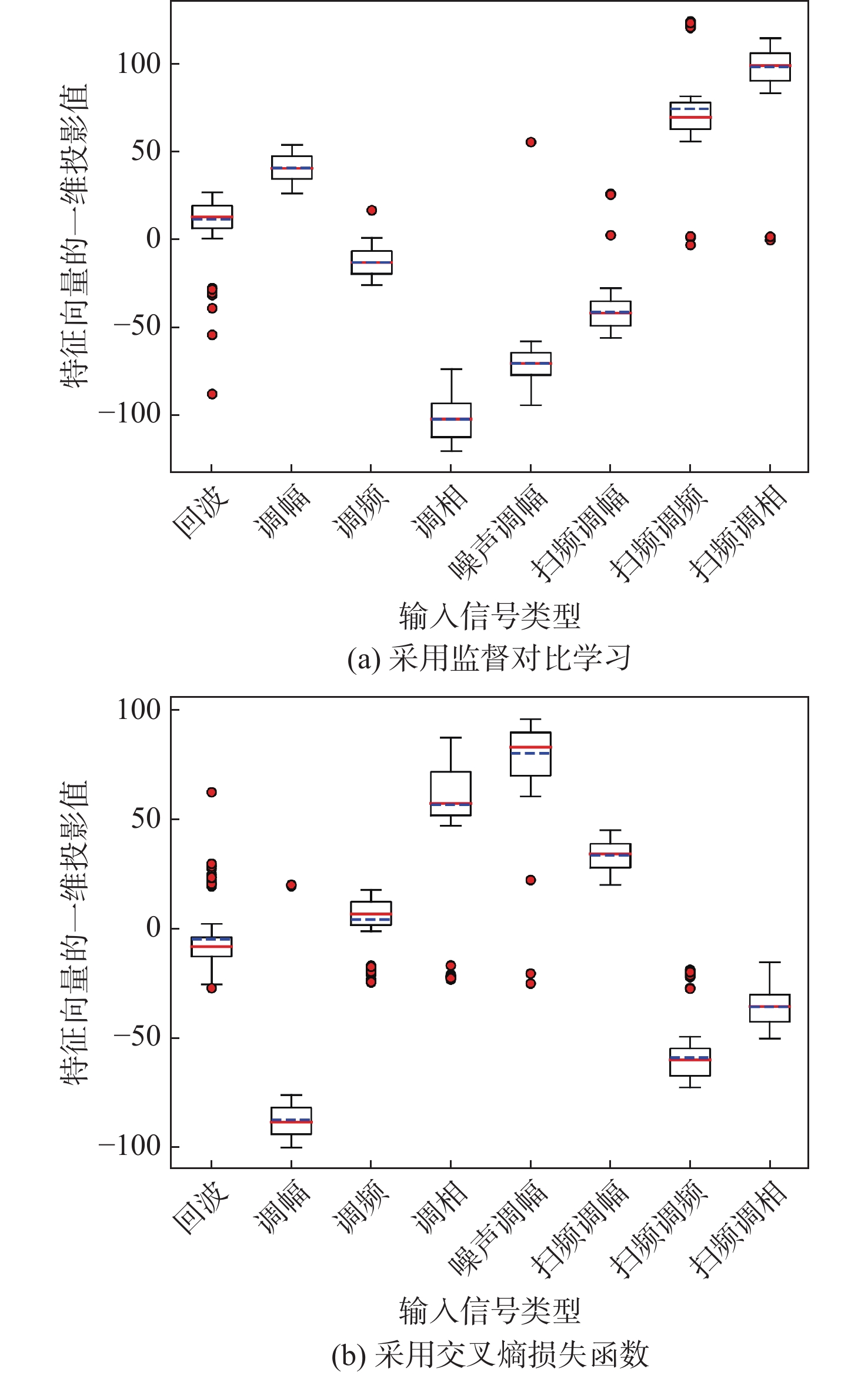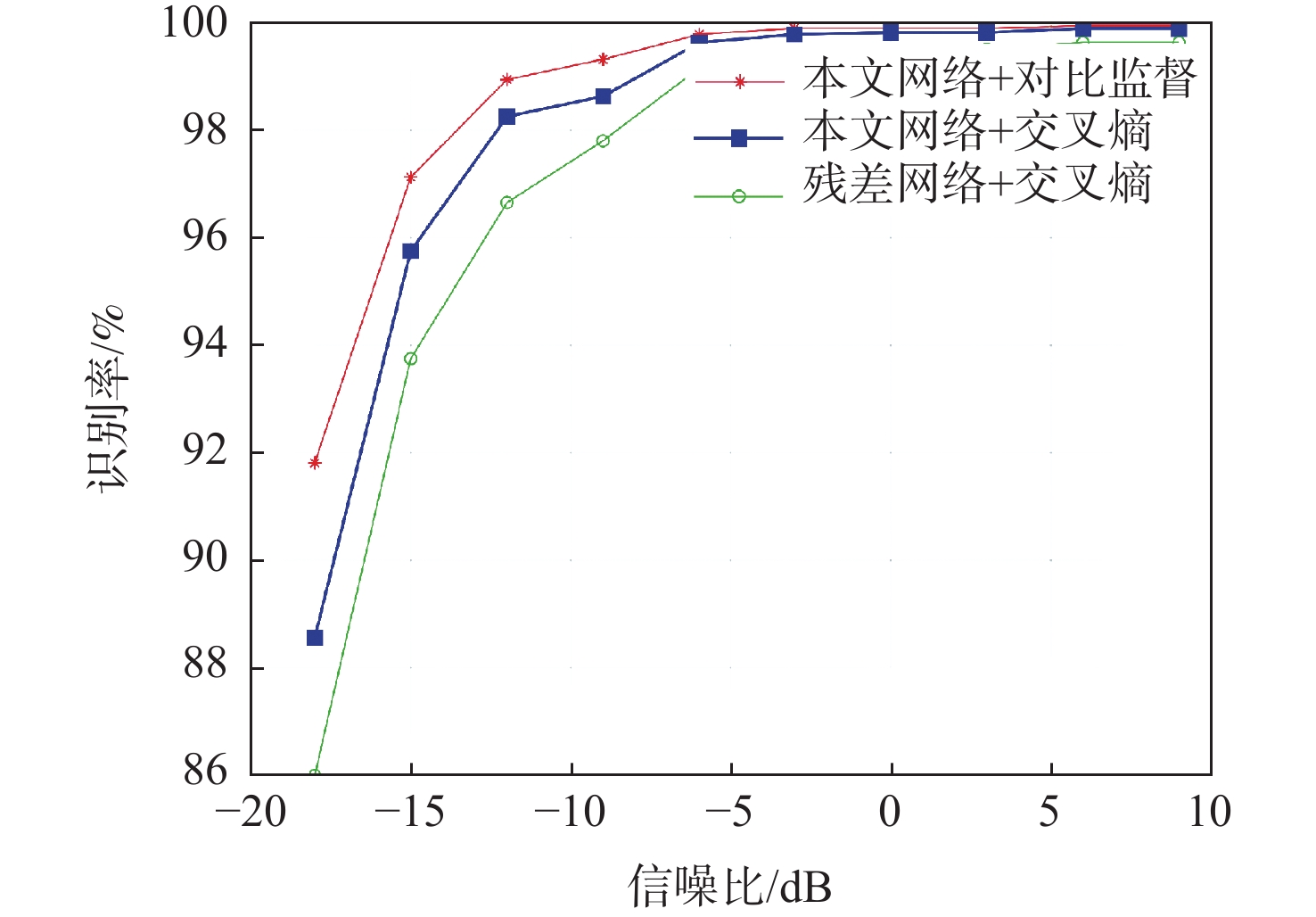-
摘要:
连续波调频多普勒引信在战场上容易受到干扰,从而导致弹药早炸失去毁伤能力。为了提高调频多普勒引信对信息型干扰的抗干扰能力,实现多种干扰信号与目标回波的区分,提出一种基于监督对比学习的目标与干扰信号分类识别方法。该方法首先通过残差网络和自注意力机制搭建了主干网络;然后利用引入标签的方式改进了对比学习损失函数,实现了监督对比学习;最后采用中频信号搭建数据集,通过监督对比学习的方式来训练网络,从而实现对目标与干扰信号的分类和识别。仿真结果表明:该方法能够实现多种干扰种类与目标回波的识别,并且识别率能够达到98.7%。在低信噪比环境下的识别效果更为出色,在信噪比为−18 dB的环境下,仍然能有91.81%的识别率,相比普通残差网络的86.12%的识别率更高。
Abstract:Frequency modulated continuous wave (FMCW) Doppler fuze is easy to be interfered with on the battlefield, resulting in an early explosion and loss of damage ability. To improve the anti-jamming ability of FMCW Doppler fuze against information-based jamming and realize the distinction between multiple jamming signals and target echoes, this paper proposed a method of target and jamming signal classification and recognition based on supervised contrastive learning. Firstly, the backbone network was constructed by residual network and self-attention mechanism. Then, the contrastive learning loss function was improved by introducing labels, and supervised contrastive learning was realized. Finally, an intermediate frequency signal was used to build the dataset, and the network was trained by supervised comparative learning, so as to realize the classification and recognition of the target and jamming signal. The simulation results show that this method can realize the recognition of multiple jamming types and target echoes, and the recognition rate can reach 98.7%. In the low signal-to-noise ratio (SNR) environment, the recognition effect is better. In the SNR environment of −18 dB, the recognition rate is still 91.81%, which is higher than the 86.12% recognition rate of ordinary residual networks.
-
[1] 代健, 晏祺, 闫晓鹏, 等. 基于模糊c-均值增量更新的脉冲多普勒引信干扰与目标信号识别[J]. 兵工学报, 2018, 39(9): 1711-1718.DAI J, YAN Q, YAN X P, et al. Recognition of jamming and target signal for pulse Doppler fuze based on FCM algorithm with incremental update[J]. Acta Armamentarii, 2018, 39(9): 1711-1718(in Chinese). [2] 代健, 李泽, 郝新红, 等. 基于目标联合特征提取的脉冲多普勒引信抗干扰方法[J]. 兵工学报, 2019, 40(2): 225-233.DAI J, LI Z, HAO X H, et al. Anti-jamming method for pulse Doppler fuze based on joint feature extraction of target signal[J]. Acta Armamentarii, 2019, 40(2): 225-233(in Chinese). [3] DAI J, HAO X H, LI Z, et al. Adaptive target and jamming recognition for the pulse Doppler radar fuze based on a time-frequency joint feature and an online-updated naive Bayesian classifier with minimal risk[J]. Defence Technology, 2022, 18(3): 457-466. doi: 10.1016/j.dt.2021.02.008 [4] 张彪, 闫晓鹏, 栗苹, 等. 基于支持向量机的无线电引信抗扫频式干扰研究[J]. 兵工学报, 2016, 37(4): 635-640.ZHANG B, YAN X P, LI P, et al. Research on anti-frequency sweeping jamming of radio fuze based on support vector machine[J]. Acta Armamentarii, 2016, 37(4): 635-640(in Chinese). [5] 李志强. 连续波多普勒无线电引信目标信号识别方法研究[D]. 北京: 北京理工大学, 2014.LI Z Q. Research on target signal identification method of continuous wave Doppler radio fuze[D]. Beijing: Beijing Institute of Technology, 2014(in Chinese). [6] 郝新红, 杜涵宇, 陈齐乐. 调频引信粗糙面目标与干扰信号识别[J]. 北京航空航天大学学报, 2019, 45(10): 1946-1955.HAO X H, DU H Y, CHEN Q L. Rough surface target and jamming signal recognition of FM fuze[J]. Journal of Beijing University of Aeronautics and Astronautics, 2019, 45(10): 1946-1955(in Chinese). [7] 黄莹, 郝新红, 孔志杰, 等. 基于熵特征的调频引信目标与干扰信号识别[J]. 兵工学报, 2017, 38(2): 254-260.HUANG Y, HAO X H, KONG Z J, et al. Recognition of target and jamming signal for FM fuze based on entropy features[J]. Acta Armamentarii, 2017, 38(2): 254-260(in Chinese). [8] 吴礼洋, 呙鹏程, 刘超, 等. 基于注意力机制增强残差网络的雷达信号调制类型识别[J]. 兵工学报, 2023, 44(8): 2310-2318.WU L Y, WU P C, LIU C, et al. Radar signal modulation type recognition based on attention mechanism enhanced residual network[J]. Journal of Ordnance Engineering, 2023, 44(8): 2310-2318(in Chinese). [9] 瞿奇哲. 基于深度学习的雷达信号识别[D]. 成都: 电子科技大学, 2021.QU Q Z. Radar signal recognition based on deep learning [D]. Chengdu: University of Electronic Science and Technology of China, 2021(in Chinese). [10] 刘国满, 聂旭娜. 一种基于卷积神经网络的雷达干扰识别算法[J]. 北京理工大学学报, 2021, 41(9): 990-998.LIU G M, NIE X N. A radar jamming recognition algorithm based on convolutional neural network[J]. Transactions of Beijing Institute of Technology, 2021, 41(9): 990-998(in Chinese). [11] 崔占忠, 宋世和, 徐立新. 近炸引信原理 [M]. 第3 版. 北京: 北京理工大学出版社, 2009: 76-100.CUI Z Z, SONG S H, XU L X. Principle of proximity fuze [M]. 3 ed. Beijing: Beijing Institute of Technology Press, 2009: 76 -100(in Chinese). [12] KHOSLA P, TETERWARK P, WANG C, et al. Supervised contrastive learning[J]. Advances in Neural Information Processing Systems, 2020, 33: 18661-18673. [13] WANG Q, DU P F, YANG J Y, et al. Transferred deep learning based waveform recognition for cognitive passive radar[J]. Signal Processing, 2019, 155: 259-267. doi: 10.1016/j.sigpro.2018.09.038 [14] VASWANI A, SHAZEER N, PARMAR N, et al. Attention is all you need[J]. Advances in Neural Information Processing Systems, 2017, 30: 5998-6008. [15] 左环宇, 郝新红, 岳凯. 调频多普勒引信抗调幅干扰性能分析[J]. 北京航空航天大学学报, 2017, 43(10): 2163-2170.ZUO H Y, HAO X H, YUE K. Anti-AM jamming performance analysis of FM Doppler fuze[J]. Journal of Beijing University of Aeronautics and Astronautics, 2017, 43(10): 2163-2170(in Chinese). [16] 李泽, 闫晓鹏, 栗苹, 等. 扫频式干扰对调频多普勒引信的干扰机理研究[J]. 兵工学报, 2017, 38(9): 1716-1722.LI Z, YAN X P, LI P, et al. Jamming mechanism of frequency sweep jamming to FM Doppler fuze[J]. Acta Armamentarii, 2017, 38(9): 1716-1722(in Chinese). -








 下载:
下载:
